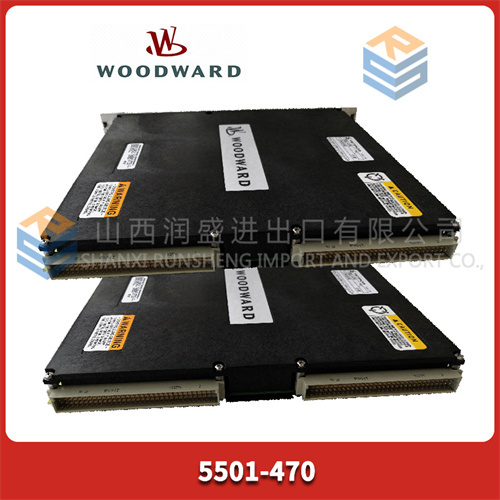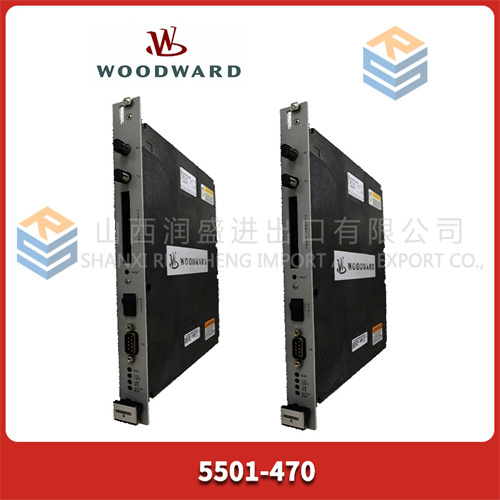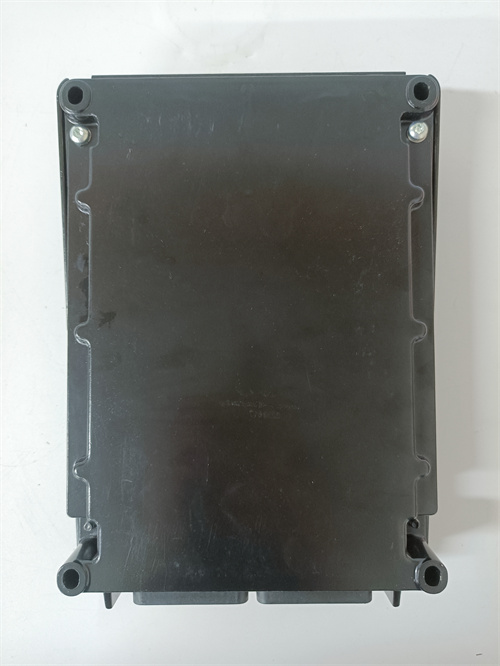Description

1. Product Overview
The Woodward 5501 – 470 is a product from Woodward, a leading provider of control systems and components for the energy, aerospace, and industrial markets. Woodward has a long – standing reputation for high – quality, reliable control solutions, and the 5501 – 470 is likely a specialized control module designed for specific applications, often related to engine or turbine control.
2. Key Functions
- Engine/Turbine Control: The primary function of the Woodward 5501 – 470 is to control the operation of engines or turbines. It can manage various parameters such as speed, load, and fuel flow. For example, in a gas turbine power generation system, it can adjust the fuel flow rate to maintain a constant speed of the turbine, ensuring stable electricity generation.
- Governor Function: Acting as a governor, it can sense changes in the speed of the engine or turbine. If the speed deviates from the set – point, the 5501 – 470 will make appropriate adjustments to the control signals sent to the fuel or steam valves. This helps in preventing over – speeding or under – speeding of the rotating equipment.
- Load Sharing: In multi – engine or multi – turbine installations, the module can facilitate load sharing. It can communicate with other control units to ensure that each engine or turbine in the system contributes an appropriate amount of power according to its capacity and the overall load demand.
3. Product Parameters
| Parameter | Specification |
|---|---|
| Supply Voltage | Usually in the range of 18 – 32 VDC, providing a stable power source for the internal electronics. This wide voltage range allows for flexibility in different power supply configurations. |
| Input Signals | It can receive multiple input signals, including speed signals from a speed sensor (such as a magnetic pickup or an encoder), load signals from a power transducer, and set – point signals from a control panel or a remote control system. These signals are used as references for the control algorithms. |
| Output Signals | The output signals are used to control the actuators of the fuel or steam valves. They can be analog signals, such as 4 – 20 mA or 0 – 10 V, or digital signals for more advanced valve control systems. |
| Control Range | The speed control range might be from 500 RPM to 5000 RPM, depending on the type of engine or turbine it is controlling. The load control range can typically cover from 0% to 100% of the rated load of the equipment. |
| Accuracy | It offers high – precision control, with a speed control accuracy of ±0.2% or better. This ensures that the engine or turbine operates within a very narrow speed tolerance. |
| Operating Temperature | Can operate in a temperature range of – 40°C to 70°C, making it suitable for use in harsh environmental conditions, such as in outdoor power plants or in cold – climate applications. |
| Dimensions | [Length: 150 mm, Width: 120 mm, Height: 70 mm] (approximate), which is a relatively compact size for easy installation in control cabinets or near the engine/turbine. |
4. Advantages and Features
- High – Accuracy Control: The precise control capabilities of the Woodward 5501 – 470 result in improved efficiency and performance of engines and turbines. In a diesel engine application, it can optimize the fuel injection timing and quantity, reducing fuel consumption and emissions.
- Robust Design: Built to withstand harsh industrial environments, it is resistant to vibration, shock, and electrical noise. This reliability is crucial in applications where continuous and uninterrupted operation is required, such as in power generation for hospitals or data centers.
- Flexible Configuration: The module can be easily configured to meet different application requirements. The set – points for speed, load, and other control parameters can be adjusted via a user – friendly interface or through communication protocols. This flexibility allows it to be used in a wide variety of engine and turbine types.
5. Application Areas
- Power Generation: In both traditional fossil – fuel power plants and renewable energy power plants (such as biogas or small – scale hydro – power plants), the Woodward 5501 – 470 is used to control the engines or turbines. It ensures stable power output and efficient operation of the power generation equipment.
- Marine Applications: On ships, it can control the main engines and auxiliary power generators. It helps in maintaining the speed and power output of the engines according to the navigation requirements and the electrical load on the ship.
- Industrial Machinery: In industrial settings, it can be used to control engines or turbines that drive compressors, pumps, or other heavy – duty machinery. This ensures smooth and efficient operation of the industrial processes.
6. Selection Considerations
- Compatibility: Ensure that the Woodward 5501 – 470 is compatible with the engine or turbine you are using. Check the input and output signal requirements, as well as the power supply voltage.
- Performance Requirements: Evaluate your specific control requirements, such as the speed and load control range, accuracy, and response time. Make sure the module can meet these requirements for your application.
- Environment: Consider the operating environment, including temperature, humidity, and the presence of dust or corrosive substances. The module should be able to operate reliably in such conditions.
- Cost – Benefit Analysis: Compare the cost of the Woodward 5501 – 470 with its features and performance. Consider the long – term savings in terms of energy efficiency, reduced maintenance, and improved equipment lifespan.
7. Precautions
- Installation: Follow the installation instructions provided by Woodward carefully. Ensure proper grounding and wiring to prevent electrical interference and malfunctions.
- Maintenance: Regularly check the module for any signs of damage or wear. Clean the module and its connections to prevent dust and debris from affecting its performance.
- Software Updates: If the module has associated software, keep it up – to – date to access the latest features and improvements in control performance.











Reviews
There are no reviews yet.